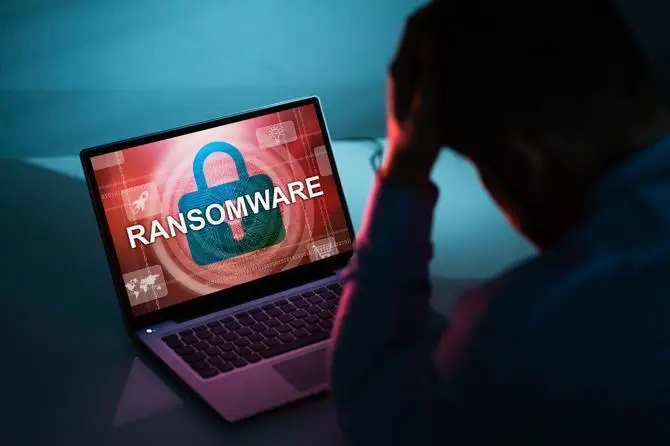ansomware attacks aren’t just about the final blow. They are methodical, insidious, and often begin with subtle signs long before encryption begins. The attack creeps in like a rising tide, undetected at first, before it locks up your data and holds it hostage. By the time the ransom note appears, it’s too late to prevent the damage.
Each stage of the attack presents an opportunity to detect, disrupt, and neutralise the threat before it reaches its final stage. Unfortunately, many organisations miss these critical early indicators—allowing attackers to disable defences, escalate privileges, and evade detection until it’s too late.
With continuous validation, your incident response team can identify these early warning signs, keeping your defences sharp and responsive at every stage of the attack.
The Three Stages of a Ransomware Attack – and How to Detect It
Ransomware doesn’t strike all at once. It follows a carefully planned sequence of stages, each offering a small window of opportunity to detect and stop the attack. Let’s break down the three stages of a ransomware attack and how continuous monitoring can protect your organisation:
1. Pre-Encryption: Laying the Foundation for the Attack
Before encryption kicks in, attackers work to establish persistence, disable defences, and disable recovery options. Their actions during this phase include:
- Deleting shadow copies and backups to prevent file restoration.
- Injecting malware into trusted processes to ensure persistence.
- Creating mutexes to prevent the malware from being stopped.
At this stage, you might notice early Indicators of Compromise (IOCs) such as unusual file deletions, process injections, or service interruptions. Detecting and responding to these signs can prevent the attack from gaining traction and progressing to the next phase.
2. Encryption: Locking You Out
Once attackers have entrenched themselves, they move quickly to encrypt files. The encryption process can happen rapidly, locking down systems within minutes, or it can be stealthy, slowly encrypting files until it’s too late.
Traditional defences may struggle to detect these signs, which is why active validation is crucial. By continually testing your detection mechanisms for ransomware activity, you can identify malicious behaviour before files are locked down.
3. Post-Encryption: The Ransom Demand
Once the attack has succeeded, attackers issue their ransom demand. This usually takes the form of a ransom note demanding payment—often in cryptocurrency—in exchange for decryption keys.
At this point, your options are limited: either pay the ransom or try to recover your data, often at great expense. The damage is already done.
Key Indicators of Compromise (IOCs): What to Look Out For
To prevent your organisation from reaching the ransom demand phase, it’s crucial to detect these early warning signs. Below are the most common IOCs that can help identify ransomware in the early stages:
1. Shadow Copy Deletion: Erasing Recovery Options
Attackers delete Windows Volume Shadow Copies to prevent file recovery, locking you into paying the ransom. These backups allow data to be restored if corrupted, making them a prime target for attackers.
How it works: Ransomware executes commands like:
vssadmin.exe delete shadows
By erasing these copies, attackers ensure they can lock your files and leave you with few recovery options.
2. Mutex Creation: Preventing Multiple Infections
A mutex (mutual exclusion object) ensures that only one instance of malware runs at a time, reducing its visibility and preventing it from triggering multiple infections. This technique is used by ransomware to avoid detection and preserve resources.
Defensive trick: Security tools can preemptively create known mutexes, tricking ransomware into thinking it’s already running and causing it to self-terminate.
3. Process Injection: Hiding Inside Trusted Applications
Ransomware often injects malicious code into legitimate system processes to avoid detection by antivirus software. This allows ransomware to operate undetected, even as it encrypts files.
Common techniques:
- DLL Injection
- Reflective DLL Loading
- APC Injection
By hiding in trusted processes, ransomware can bypass security measures and continue its attack undetected.
4. Service Termination: Disabling Security Tools
Ransomware attempts to disable security services—such as antivirus, EDR (Endpoint Detection and Response), and backup solutions—to ensure it can encrypt files without interruption.
How it works: Ransomware uses administrative commands to shut down services:
taskkill /F /IM MsMpEng.exe
By terminating security services, attackers amplify their attack’s impact, making it harder for victims to recover.
“In today’s cyber threat landscape, staying one step ahead of ransomware requires more than just reactive measures. Continuous validation of your defences ensures that you’re always prepared, no matter how the attack evolves.”
— Peter Bassill, CISO
How Continuous Ransomware Validation Keeps You One Step Ahead
With ransomware becoming more sophisticated, relying on static detection tools alone isn’t enough. Continuous ransomware validation emulates a ransomware attack and tests your systems against a variety of IOCs. This proactive approach ensures that your defences are always ready, even when the IOCs evolve.
By continuously validating your defences against simulated ransomware attacks, you can:
- Identify and respond to IOCs in real time.
- Ensure your detection tools are tuned to recognise evolving ransomware techniques.
- Provide peace of mind knowing your incident response capabilities are tested and resilient.
Don’t wait until it’s too late. Stay ahead of the evolving ransomware threat with continuous validation and robust incident response practices.
In Summary
Your organisation’s defences need to be ready for the stealthy stages of a ransomware attack, and this means continuous validation and early detection are key. If you’re not monitoring for the subtle signs of compromise, you could be leaving yourself vulnerable. Our incident response service helps ensure that your security systems are continuously tested and primed to prevent ransomware before it strikes.
Ready to strengthen your defences? Contact us today to learn how our expert team can keep your organisation resilient against evolving ransomware threats.






